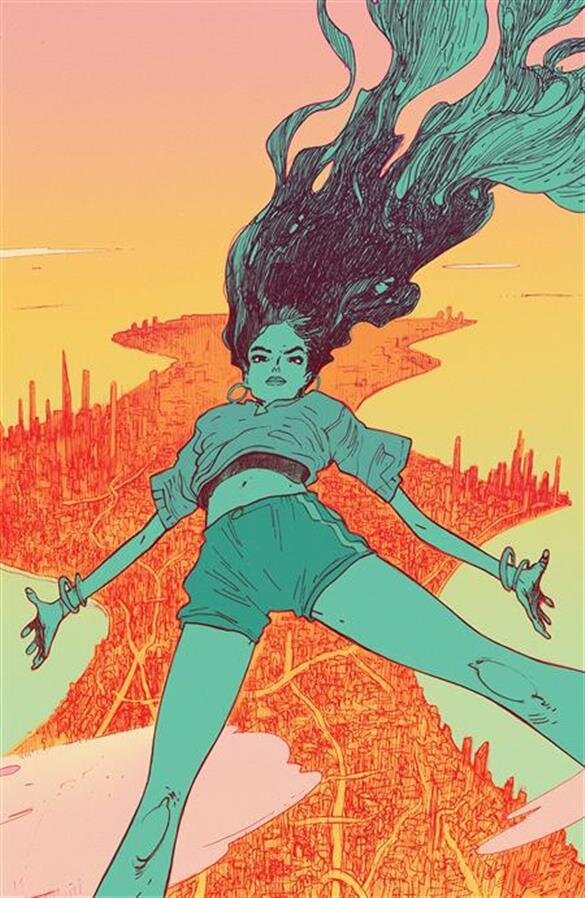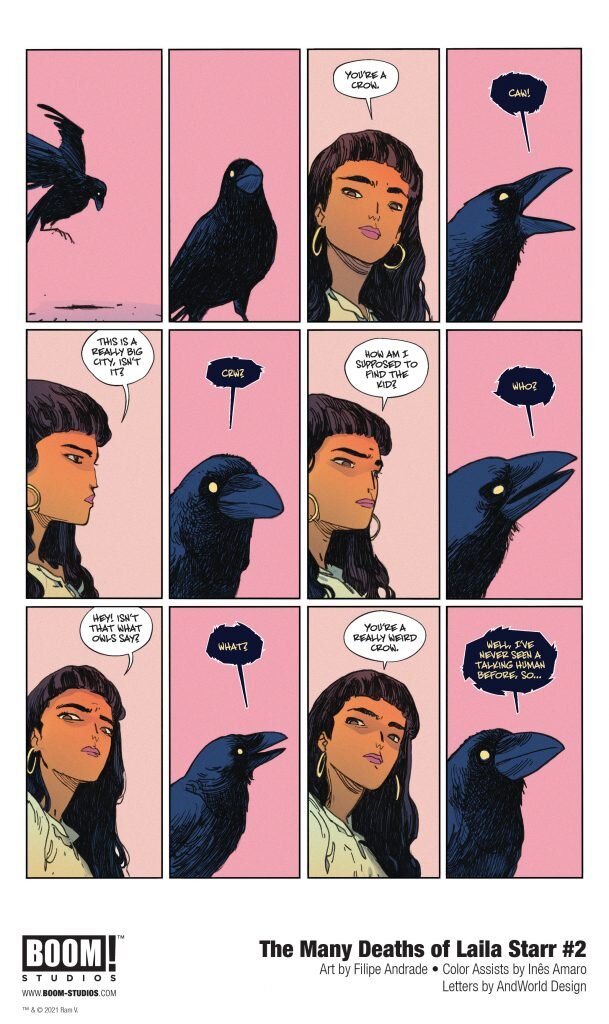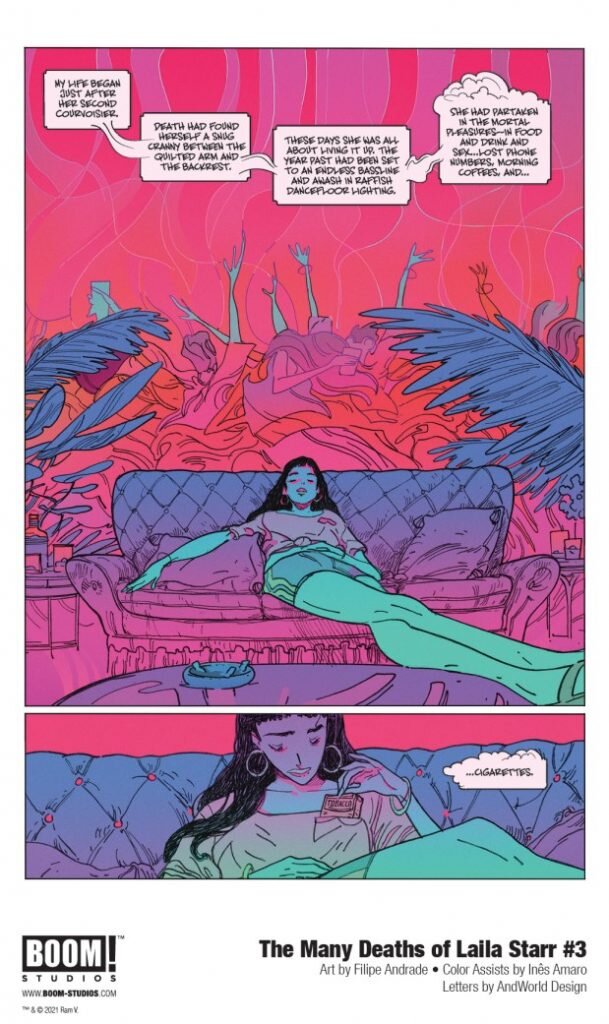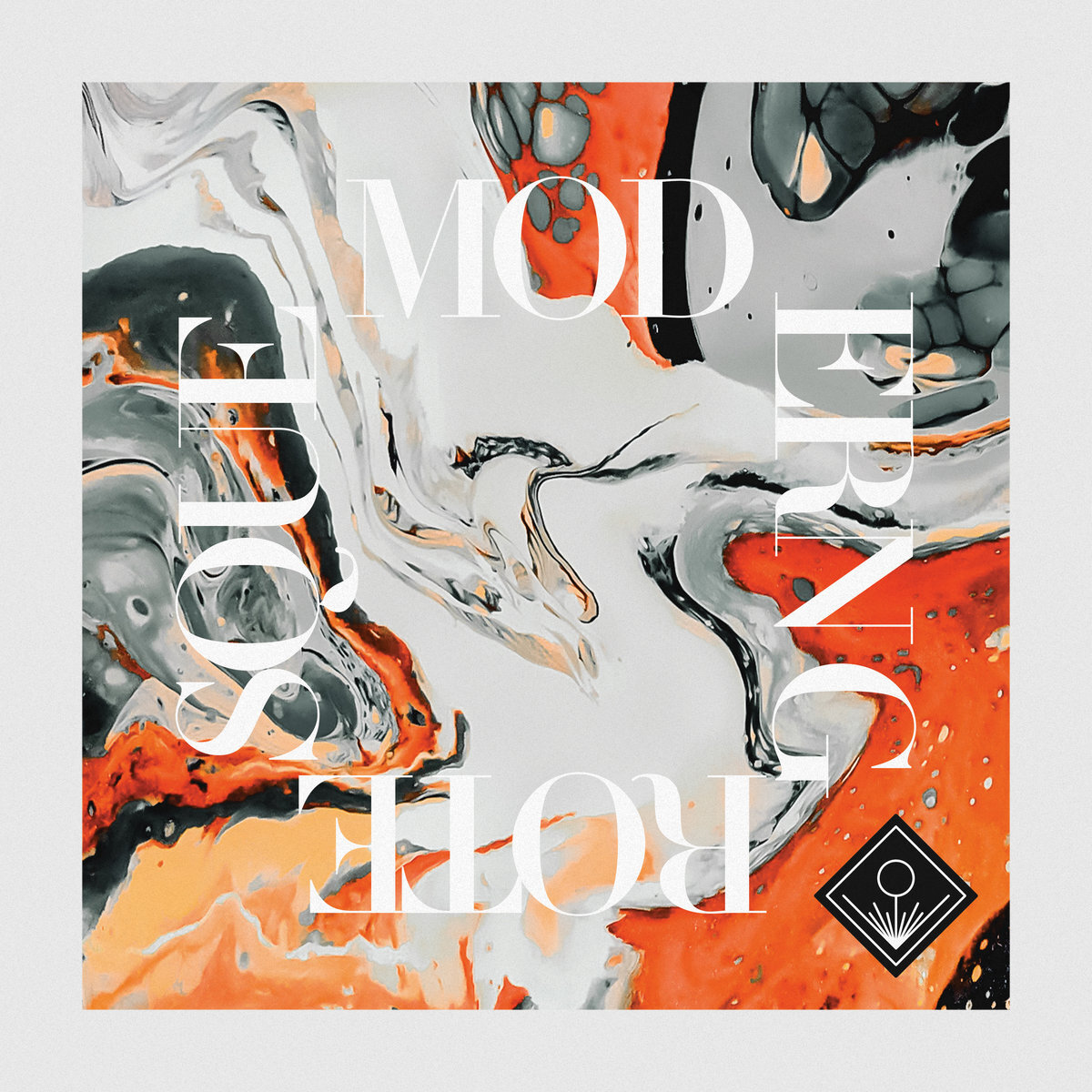By the third issue of The Many Deaths of Laila Starr, I feel like I could have followed Death through whatever life she wanted to show me, if only to see the kinds of worlds she hangs around. Inhabiting the body of Laila Starr, and with a few favors to call in, Death is flung wildly into the different lives and times of Mumbai to find a way to restore her role as a god. Written by Ram V, the story is framed in such a way that hooked me every time a new issue began. The familiar stranger at the party, or the friend tagging an old pillow factory wall, sweeps Laila into slices of life (and death) she may have missed in her previous profession. Filipe Andrade, the artist for all currently released issues, makes the city breath with the energy of a large population. At times the details are overwhelming, crowded, and intricate. But in other places they flow in the shaky dance of smoke - or water, or flowers, or the hot city streets - that make the pages feel all consuming. The colors are bright and fluid, which makes even the night feel unique with life.
In the first issue, “Once Upon A Falling Starr,” we are shown the rapidly colliding paths of Death, the goddess who is fired from the corporation of gods and cast to live among the mortals; Laila Starr, who’s orphan body Death now inhabits; and Darius Shah, the baby who would grow to be the inventor of immortality. As Death, now Laila Starr, grapples with living in a mortal body, and whether to kill the baby Darius Shah or not, she dies and is brought back to life again by an old friend: the God of Life, Pranah.
Death and Pranah share quiet moments at the end of each episode and, as coworkers, as old friends, they catch up in the way only people who know each others’ past can - with sympathy and wisdom.
What is striking about The Many Deaths of Laila Starr - as the second issue flies by, and then the third - are these tender moments. Reflections on death and life couch so easily into the different characters’ histories. Whether the focus is on the personhood of a servant, who spends his days harvesting mangoes and jackfruit and sapodilla but is not allowed to eat them, or how new love can sometimes make you contemplate mortality, The Many Deaths… is a delicate look into what surrounds a person’s life, and what makes up their inner worth. There are mistakes and fleeting moments; there are heavy realizations. There is death. But when the issue ends, and Laila Starr returns to Pranah (to Life) from another death, there is often the calm sea - or the view from the balcony, or a room with a bed and a chair by the window - that acts as a re-centering of perspective. The finality of death becomes the end of a day from which you can start again to realign with the cosmic reality of a person’s journey.
This comic is a gift to the audience, not only because it’s an insight into a world and culture we may not be familiar with (especially in this medium, especially this widely distributed in the US), but also because the story builds beautiful empathy for life (and in many ways death). By forcing the God of Death into a mortal form, even if that form is repeatedly resurrected by the God of Life, the story becomes about the human elements she may have missed in her previous existence. It becomes about us.
The Many Deaths of Laila Starr is written by Ram V and illustrated by Filipe Andrade, and issue #4 is out this week from Boom! Studios.






